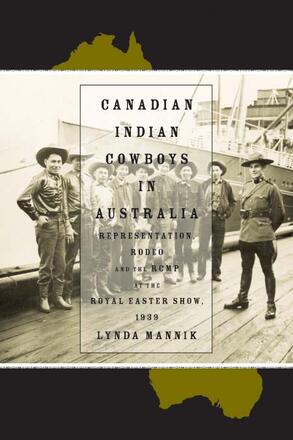
Canadian Indian Cowboys in Australia
Representation, Rodeo, and the RCMP at the Royal Easter Show, 1939
La description
The big new thrill at this year’s Royal Show will be the Chuck Wagon Races, with Red Indians in full war-paint going helter-skelter around the arena, chuck wagons swaying and jostling perilously, horse teams urged with wild whooping into a frenzy of speed. - Newspaper advertisement, Sydney, Australia, March 1939.
In 1939, a troupe of eight rodeo riders, accompanied by an RCMP officer, travelled to Sydney, Australia, to compete in the Royal Easter Show. The men were expected to compete in various rodeo events, as well as to sell handicrafts at the fair’s "Indian village," where they also camped. International competition in rodeo was very rare at the time, and the team proved to be a popular draw for Australian audiences.
This little-known moment in Canadian history is explored in Canadian Indian Cowboys in Australia. Lynda Mannik uniquely incorporates five different perspectives of the event: that of the Royal Agricultural Society of New South Wales; the Canadian government; the eight First Nations men who participated; the RCMP officer who travelled with the team; and the Australian public. These multiple perspectives offer insight into the constructs of identity and visual representation as they are influenced by intercultural, social, and power relationships.
Reviews
Canadian Indian Cowboys is a finely grained, detailed analysis of a single event in which First Nations seized a unique opportunity to represent themselves internationally . . . The Royal Easter Show lasted a few short weeks in 1939 but, through Mannik’s intriguing treatment, it returns to offer new insights into the interactions between Aboriginal and non–Aboriginal people on the world stage.
—Mary–Ellen Kelm, Canadian Historical Review